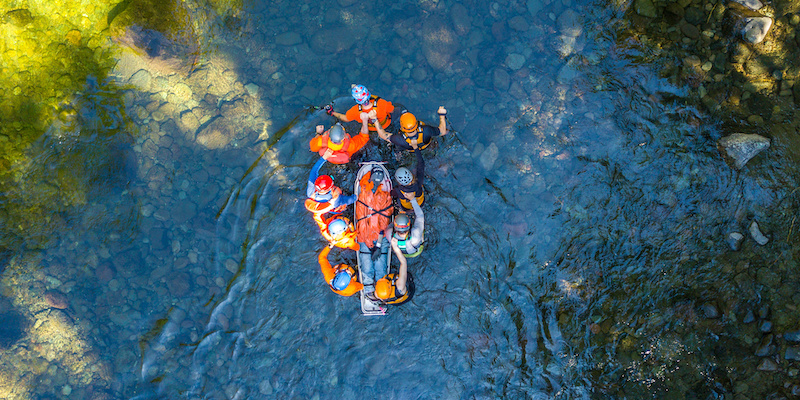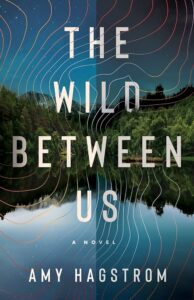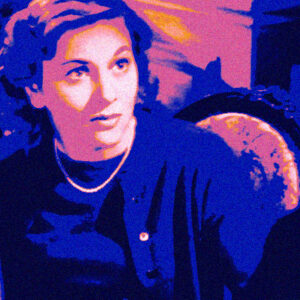It’s 1986, and I’m lost in the forest. I’m ten years old, huddled at the base of a Ponderosa pine at the far reaches of Silver Lake, California, one of innumerous small, high Alpine lakes strewn across the Sierra Nevada mountains like blue-green jewels in a tangled necklace. It’s getting dark, and I haven’t seen the rest of my family since I barreled carelessly past a trail junction several hours ago.
I know I’m supposed to stay put if I get lost, hug a tree, all that, and I curl myself up into a ball in the tree well, hoping it will provide shelter. Already wondering what nocturnal animals will emerge once the sun disappears behind the peaks of the Sierra Buttes behind me. But then it occurs to me: I’m not lost. Or to put it more accurately: I’m not lost. I’ve lost my parents, this is true, but I know where I am. And I know how to get back to the trailhead and my family’s car.
I take off down the trail at a sprint, trying out outrun the dark. And I succeed. Not at beating the sunset, but at least at returning to the parking lot where my worried-sick family is more than ready to admonish me. Cocooned in the back seat of the car on the drive home, staring out my window as the dark woods rush past, I think: what if I was still out there?
Fast forward five years, and I’m a teenager traversing this same wilderness with my friends. The daredevils among us (not me) plunge into the lake from an overhang of granite impossibly high above the surface of the water, and when one of the girls shrieks in fear, they take it as their cue to leap from higher heights, then higher. As it turns out, they scare just as easily when she stomps off, vowing to find her own way home. She heads in the complete wrong direction, and we just barely manage to catch up with her before the wilderness swallows her whole. Or worse, before she can rat us all out to our parents. But in my warm bed that night, I have to wonder: what if we hadn’t?
A seed of an idea is planted. It remains buried as I grow up and move to Oregon, start a family and a writing career. But then I decide to volunteer for my county Search and Rescue Unit (SAR), and on my very first ‘kid search’–a rite of passage of sorts no one welcomes–I’m thrown back to my own disorienting moments in the mountains and the feeling that you can know precisely where you are while still feeling inexplicably lost.
That search was a tough one, and I struggled…not only to find purchase against the rough terrain as I hiked, radio on my chest, pack on my back, but with perseverance in the face of a terrible situation. We were looking for a missing nine-year-old autistic boy in the interior of Crater Lake National Park all that day and into the night, and as a parent by that time myself, the childhood drama I’d experienced so many years ago magnified a hundred-fold. As my SAR teammates and I fanned out for a grid search, pausing, as instructed, to look under every rock and behind every fallen tree, I tried to keep my mind off the gravity of what I might find—or not find—by analyzing our search victim. Who was he? What motivated him? What erratic choices might he make in a scary situation, and where, ultimately, would he decide to flee? Making this a hypothetical situation was the only way to distance myself enough from the humanity of it all to continue in my grueling work.
And then the weather turned. My SAR training taught me that in every search, the outdoor environment is a contributing element—a character, if you will—in its own right. It has whims and moods, is changeable and malleable. And so, when a sudden and early season snowfall ground our helicopters and stalled our efforts, I knew we had a plot twist on our hands.
Devastatingly, our SAR team failed to locate that young boy, even after an exhaustive search. And as a lowly ground-pounder (hiking-focused searcher), I was not privy to any information the senior members of our team may have received in their post-search briefing. What I did know: more than just the elements and the terrain had been at play that day.
That search turned out to be one of my last with our county unit. I turned my efforts to educating children through a program called Lost But Found, which brought life-saving wilderness information to elementary-aged school children throughout our county. But even as I taught other kids what to do should they find themselves lost in the woods, and even as the impact of the individual searches I participated in faded, the intrigue of how human emotion and drama plays out in a changing and vibrant environment lingered. I began writing what would one day become my debut novel, THE WILD BETWEEN US, picking my way tentatively at first, but knowing where I would begin. I cast myself back to the mountains I knew best, breathing in the evergreen and woodsmoke-tinged air of my childhood and exhaling the story that had germinated in me without my even realizing it.
I do not consider myself a crime writer, not in the traditional sense. I am, I suppose, a writer of character-driven suspense, but only because I write characters who find themselves dropped into places and situations as volatile as their own natures. And so, for THE WILD BETWEEN US, I leaned into my lifelong experience, which had taught me that character-driven suspense set in the wilderness is never just man-against-nature. It’s character against character. It felt natural to cast the wilderness of the Sierra Nevada first and foremost as a protagonist and before even knowing who would go missing in my own Search and Rescue story, and why. Only once I had oriented myself in place and time did I drop my point-of-view characters into their setting.
Then I made the deliberate choice to give my characters a personal background not unlike my own in those same mountains. I knew firsthand that they could have a lifetime of history there, could know each turn of each trail like the backs of their hands, and could still, given the correct set of flaws, complications, circumstance, and interpersonal relationships, find themselves utterly, and completely, at a loss.
***


















